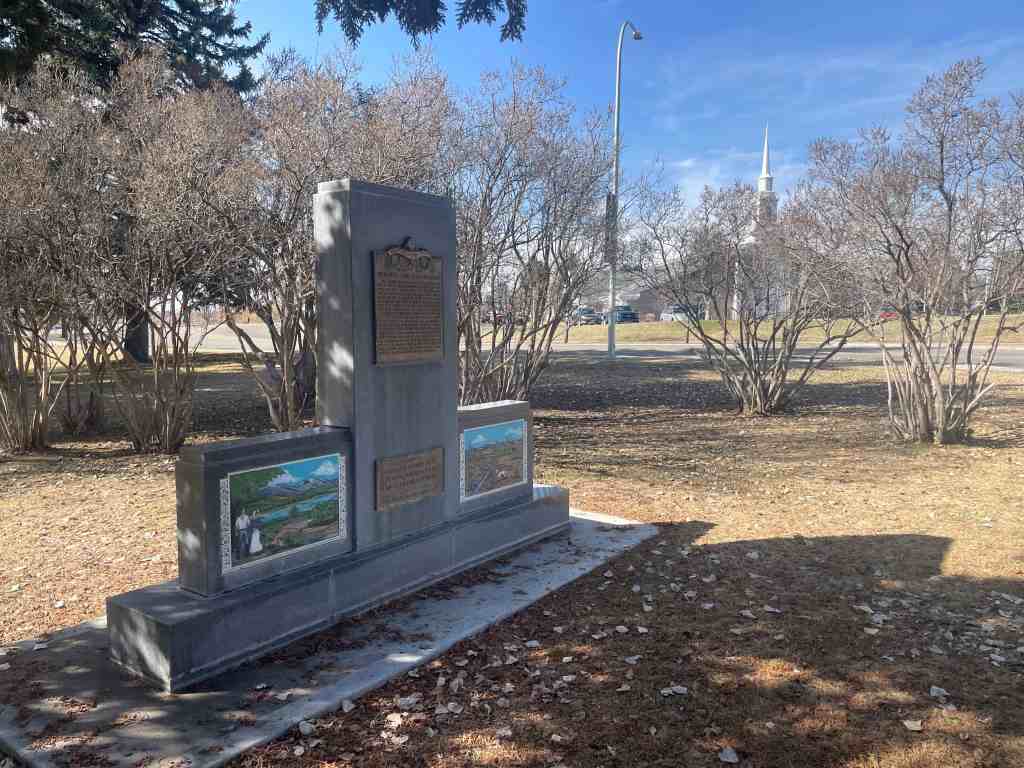Upper Snake River Valley Irrigation
The fertile soil and abundance of water in this valley lured pioneer settlers. With small slip scrapers, hand plows, picks and shovels, they cleared sagebrush, built log homes, made canals, ditches and dams to put water on the land. One of the first canals was built in 1879-1880. Rock and brush dams were built to divert water into headgates. Men lost their lives in this work. Later canals were enlarged and better dams built. The largest dam, known as the “Great Feeder”, completed June 22, 1895, diverts water from South Fork into a network of canals. Through consolidation of canal systems, 700,000 acres of irrigated land with 100 canals, known as the Upper Portion of District No.36, are using 4,150,000 acre feet of water from the river and its tributaries each irrigation season. Here the dream of reclaimed desert has been brought to full fruition. This is the legacy left by those pioneers to present and future generations.
Daughters of Utah Pioneers historic marker #228, erected in 1956 and located along the Idaho Falls Greenbelt Trail near the intersection of Riverside Drive, Memorial Drive and E Street in Idaho Falls, Idaho.
These photos provided by Marshall Hurst:


